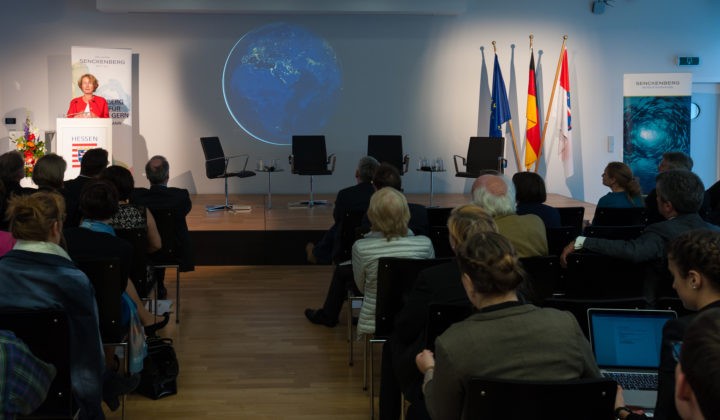Senckenberg Topics
Planetary Boundaries
In 2009, Johan Rockström (Stockholm Resilience Centre) and 28 international scientists published the article A safe operating space for humanity, in which they identified nine processes that regulate the stability and resilience of the Earth system. They proposed quantitative planetary boundaries, whose crossing would increase the risk of generating large-scale abrupt or irreversible environmental changes.
The nine planetary boundaries
1. Stratospheric ozone depletion
The stratospheric ozone layer in the atmosphere filters out ultraviolet (UV) radiation from the sun. If this layer decreases, increasing amounts of UV radiation will reach ground level. This can cause a higher incidence of skin cancer in humans as well as damage to terrestrial and marine biological systems.
The appearance of the Antarctic ozone hole was proof that increased concentrations of anthropogenic ozone-depleting chemical substances, interacting with polar stratospheric clouds, had passed a threshold and moved the Antarctic stratosphere into a new regime. Fortunately, because of the actions taken as a result of the Montreal Protocol, we appear to be on the path that will allow us to stay within this boundary.
2. Loss of biosphere integrity (biodiversity loss and extinctions)
The Millennium Ecosystem Assessment of 2005 concluded that changes to ecosystems due to human activities were more rapid in the past 50 years than at any time in human history, increasing the risks of abrupt and irreversible changes. The main drivers of change are the demand for food, water, and natural resources, causing severe biodiversity loss and leading to changes in ecosystem services. These drivers are either steady, showing no evidence of declining over time, or are increasing in intensity.
The current high rates of ecosystem damage and extinction can be slowed by efforts to protect the integrity of living systems (the biosphere), enhancing habitat, and improving connectivity between ecosystems while maintaining the high agricultural productivity that humanity needs. Further research is underway to improve the availability of reliable data for use as the ‘control variables’ for this boundary.
3. Chemical pollution and the release of novel entities
Emissions of toxic and long-lived substances such as synthetic organic pollutants, heavy metal compounds and radioactive materials represent some of the key human-driven changes to the planetary environment. These compounds can have potentially irreversible effects on living organisms and on the physical environment (by affecting atmospheric processes and climate). Even when the uptake and bioaccumulation of chemical pollution is at sub-lethal levels for organisms, the effects of reduced fertility and the potential of permanent genetic damage can have severe effects on ecosystems far removed from the source of the pollution.
For example, persistent organic compounds have caused dramatic reductions in bird populations and impaired reproduction and development in marine mammals. There are many examples of additive and synergic effects from these compounds, but these are still poorly understood scientifically. At present, we are unable to quantify a single chemical pollution boundary, although the risk of crossing Earth system thresholds is considered sufficiently well-defined for it to be included in the list as a priority for precautionary action and for further research.



